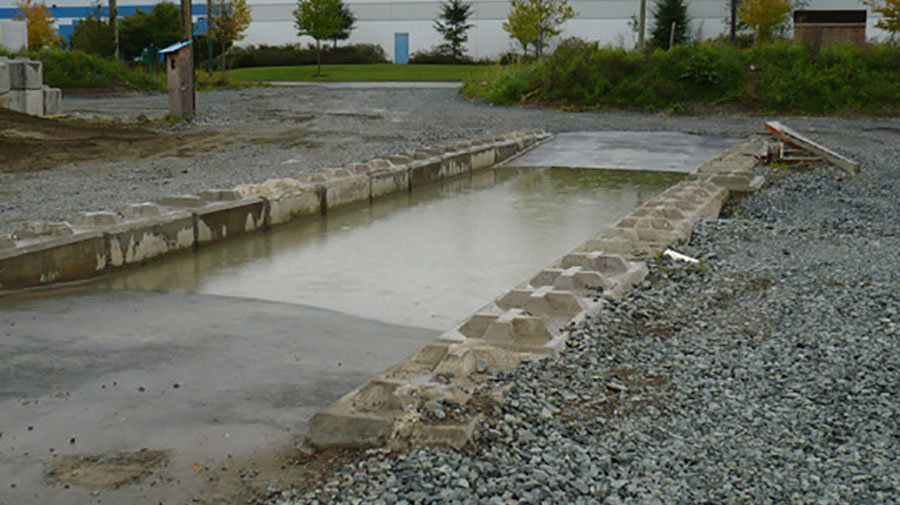
Wheel washes on site can be both beneficial and not.
Wheel washes are primarily installed on muddy and potentially-problematic sites to remove the dirt and mud from the truck tires prior to leaving site. This process helps to avoid tracking dirt and mud onto the adjacent roadway (when properly designed, installed, and placed on site – meaning as far as possible from the site entry).
I have personally seen the gamut of wheel washes on construction sites, and most of them do very little to prevent tracking onto nearby roadways. I have seen wheel washes constructed by simply digging a shallow pit in the native terrain and filling it with water – sort of like a giant puddle!
The most common wheel washes are the dug out ones with a concrete or asphalt foundation and lock-blocks on either side acting as a sort of mini-retaining wall. These wheel washes work fairly well if the wheel wash is located far from the road. This way, trucks will pass through the wheel wash and then proceed down a long 3-inch crushed rock access pad to shake the dirt and mud in the tire tread loose prior to hitting the street.
Other common wheel washes now present, are mechanical wheel washes that spray water over the tires which are activated when the truck passes over them. These can work well if the water in the system is regularily changed, and if the trucks go through them very slowly. More than often I have seen trucks drive over these weight-activated washes too quickly, and by the time the spray has been activated, half the truck is out on the road already.
If the wheel wash is placed too close to the street, then the mud in the tread will simply start being tracked onto the road once the truck has picked up enough speed to fling the mud off – this can occur blocks away from site.
Even when the wheel washes are working properly, the mud will drop off along the access pad prior to leaving site; and eventually after enough truck traffic, the access pad will begin to get caked with mud on the surface, and mud will make its way onto the streets regardless (even if to a lesser degree). Therefore, the access pad also needs to be maintained from time to time by either washing it down, or by placing more crushed rock on top.
First class wheel washes are much different, and of course much more costly to install. They should be located far from the street, and be quite long (up to 70-100 feet in length) to allow the entire truck (all tires) to be passing through the wheel wash at the same time.
These wheel washes also have bumps along the bottom (similar to a bumpy grate – like a tank tread – which helps shake the mud from the tire tread as the truck passes through. Some of these wheel washes even have an elevated metal grate where the mud will fall through the grate and settle on the bottom. This is to help keep it mud-free so that the next trucks don't pick up mud on their tires that was deposited by previous trucks.
Again, once the trucks have passed through the wheel wash, they should travel over a gravel access pad to allow any access mud to fall off prior to leaving site.
If there's no room for a proper wheel wash on site due to various limitations, then a spray wash or an area adjacent to the exit to simply “pressure wash off” the tires before leaving site is the best alternative.